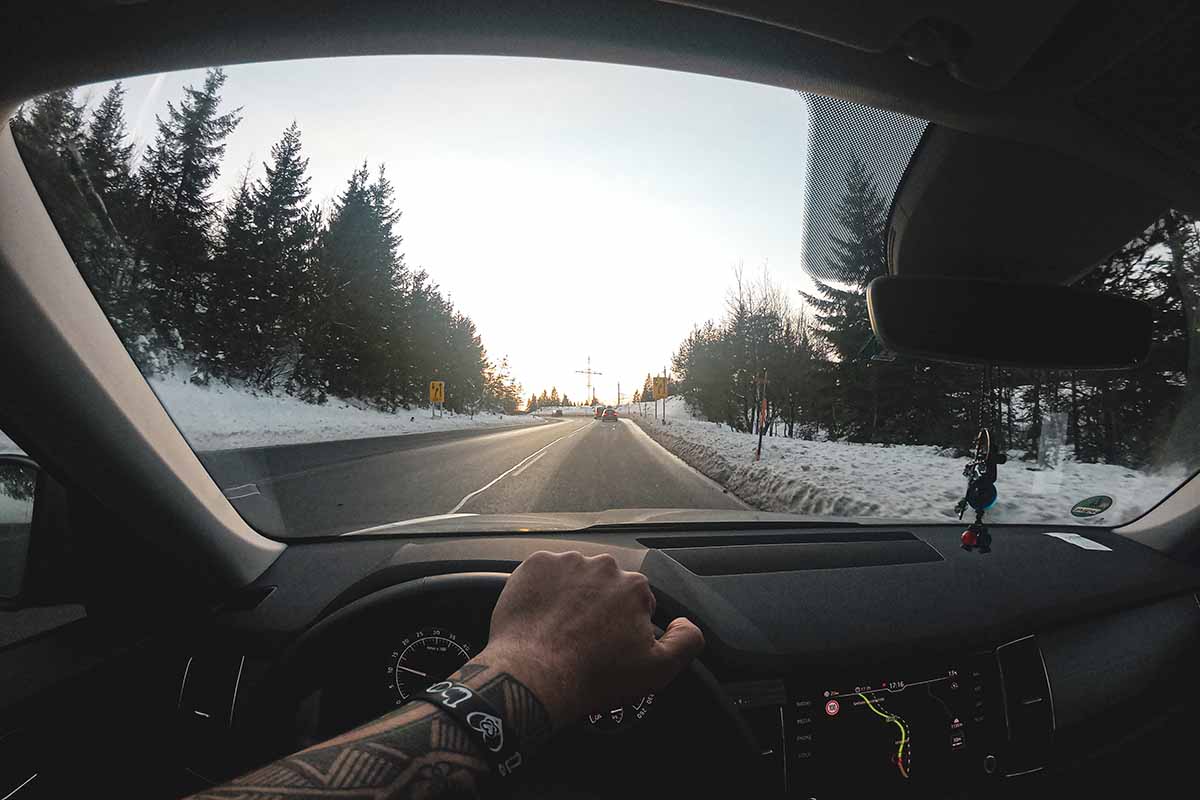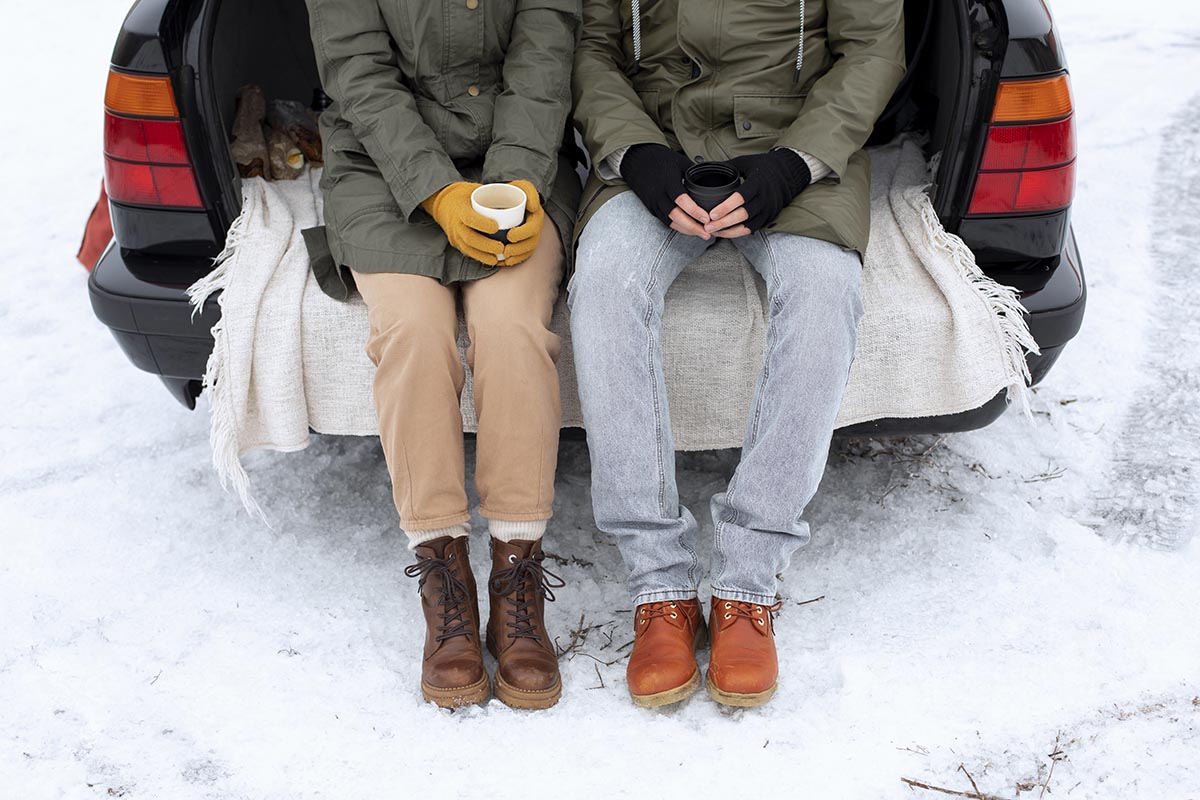Plan a Winter Road Trip Now
KEY POINTS
- Winter road trips offer unique, less crowded experiences with stunning snowy landscapes and potentially lower travel costs due to off-peak season advantages.
- Preparing for a winter journey involves vehicle tune-ups, installing snow tires, and having an emergency plan including savings or a line of credit for unforeseen issues.
- Essential road trip preparations include packing an emergency kit, checking insurance coverage, downloading maps for offline use, and ensuring winter gear is readily accessible.
When most people imagine a road trip, they picture bright blue skies over a zig-zagging road through green fields or red deserts. For good reason, road trips are a popular summer vacation, especially for those who can’t or won’t travel by plane.
It’s time to tweak this vision with snow-capped mountains and snow-lined highways this year. A wintertime road trip is an excellent idea for anyone who’s feeling cabin fever set in right about now.
Here’s why:
Contents
You Can Experience a Winter Wonderland
A winter road trip affords a stunning view of the world blanketed by snow and ice. It’s a unique way to experience a new destination or your home turf. Here are just some of the world’s most popular wintery road trips:
- The Icefields Parkway;
- Sky Highway;
- Canadian Badlands;
- The Golden Circle;
- Swedish Lapland;
- Great Smoky Mountains National Park;
- Skyline Drive;
- Bergen to the Aurlandsfjord;
- The Ring Road;
- Yosemite National Park.
Popular Tourist Sights Are Less Busy
Nothing sours a vacation more than other travelers. They slow down your entire holiday, causing congestion on the roads and at popular tourist sights. These crowds make it harder to see what you’ve traveled so far to see in the first place!
You can skip the annoyance of other tourists by traveling in the winter. The travel industry considers the winter off-peak for most destinations since fewer people want to sightsee in the cold weather.
Off-Season Travel is Cheaper
Besides having fewer crowds, off-peak travel is also cheaper. Once you pass the New Year, you’ll notice that a vacation’s biggest expenses, airfare, and accommodations, tend to come at a discount in the winter months.
You may even notice you get a deal at the pumps while filling up. Winter-grade fuel is less expensive than summer blends because it contains more butane, a cheaper ingredient.
How to Prepare for Your Wintertime Road Trip
Driving through cold and snowy conditions requires special attention. Here’s how you can prepare your car and budget for the trip.
Get a Tune-Up
A wintertime trip can be hard on your vehicle, so you must ensure it’s ready for the challenge. Bring it to your mechanic for a tune-up that checks all the important features of your car. In particular, you want to know if your brakes, battery, and headlights will withstand the cold conditions.
Install Snow Tires
Snow tires are a wintertime essential, even if you don’t expect snow to fall where you’re going. Snow tires are designed with special materials and tread patterns that remain more flexible in temperatures of 7° and below compared to all seasons.
That’s true even if the roads are bone dry. Due to their unique composition, snow tires are safer than all seasons. Studies show they brake faster on cold pavement, stopping 30 to 40 percent shorter than other tires.
Know Your Emergency Plans
You never know what’s in the road ahead. The unexpected can go one of two ways. While talking to a local, you can learn of a hidden gem that blows you away. Or, you can run into car trouble on the side of the road, waiting for a tow.
A fully stocked emergency fund is the most fantastic defense against unexpected car trouble. If these emergency savings fall short, you can rely on a line of credit or credit card as a safety net to get you back safely on the roads.
Don’t worry if you don’t already have these loans — you can apply when you run into trouble. Check out these tips for applying for a new line of credit on the go.
Just keep in mind a line of credit should only be used as a backup to savings in an emergency, like your tire needing a patch to get you home—not to finance your vacation.
Stock an Emergency Kit
If you find yourself stranded on the side of the road in bad weather, you should keep a fully stocked emergency kit in your car. Here are some things you should include:
- First aid kit;
- Jumper cables;
- Basic toolkit;
- Sand or salt;
- Flares;
- Shovel;
- Anti-freeze and windshield washer fluids;
- Water;
- Non-perishable snacks, such as grass-fed jerky sticks;
- Ice scraper and brush;
- Tea light;
- Emergency blanket.
Brush up on Your Insurance
Reading your insurance policy is always a good idea before you leave for a big trip. Knowing these details will help you understand your coverage in case something goes really wrong.
Download Maps
You never know when cloud cover or a snowstorm will destroy your data, rendering Google Maps useless. Prepare in advance for these wintertime conditions by downloading the maps you know you will need. This gives you the ability to navigate roads offline. Better yet, buy an updated paper map and store it in your glove compartment as a backup.
Pack Your Winter Gear
You’ll want to make sure you keep all your winter gear handy — things like gloves, scarves, hats, coats, and boots — so that you can pull over and explore roadside attractions in comfort. If you plan on hiking, invest in proper outdoor gear that wicks sweat away while keeping you warm in frigid temperatures.
Plan Your Winter Drive Today!
While a winter road trip may be unorthodox, it promises an unforgettable experience. Keep this in mind if you’re feeling the pull of wanderlust. There’s more to winter travel than beachside resorts!

